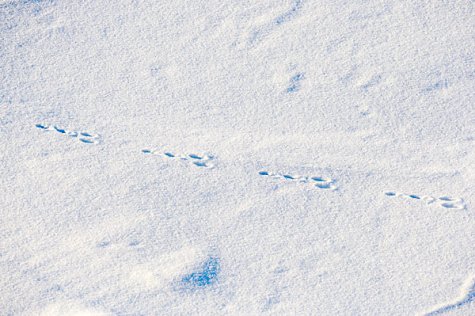Long-eared business
Photo: Sven Začek, www.zacekfoto.ee
Translation: Liis
Hare tracks
| Brown hare, European hare | Halljänes | Lepus europaeus |
The ancient native species in Estonia, here since the Ice Age, is the mountain hare. The brown hare didn’t appear in Estonia until the 19th century; it has migrated by and by from Lithuania, also brought in by the Baltic-German manor lords as an interesting hunting prey. The habitats of the two species don’t overlap to any great extent.
Brown hares live in fields, meadows, forest verges and thickets of bushes, whereas mountain hares are forest hares. They go out foraging only in the evening dusk; during the short winter day the brown hare stays in shelter. The snow cover hasn’t a crust yet, so they can scratch for the grass under the snow; when the snowdrifts grow deep the bark and twigs of trees are eaten instead. Prudent gardeners have covered young fruit trees already in autumn so that the longears can’t get at the bark.
The winter food is less nutritious than summer food and so hares process their food twice. The first round of soft excrements contain bacteria to help digest the rough food that wasn’t taken up by the organism in the first round The hard round droppings are the leftovers of the second round of digestion. Actually food is processed in this efficient way in summer too.
The brown hare has a dense, light grey-brown winter coat, with a whitish belly. A sure recognition sign is the little tail that is black on its upper side. The weight is from three to seven kilosi.









